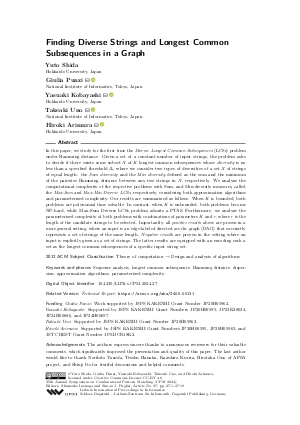LIPIcs.CPM.2024.27.pdf
- Filesize: 1.29 MB
- 19 pages

 Creative Commons Attribution 4.0 International license
Creative Commons Attribution 4.0 International license














































Feedback for Dagstuhl Publishing